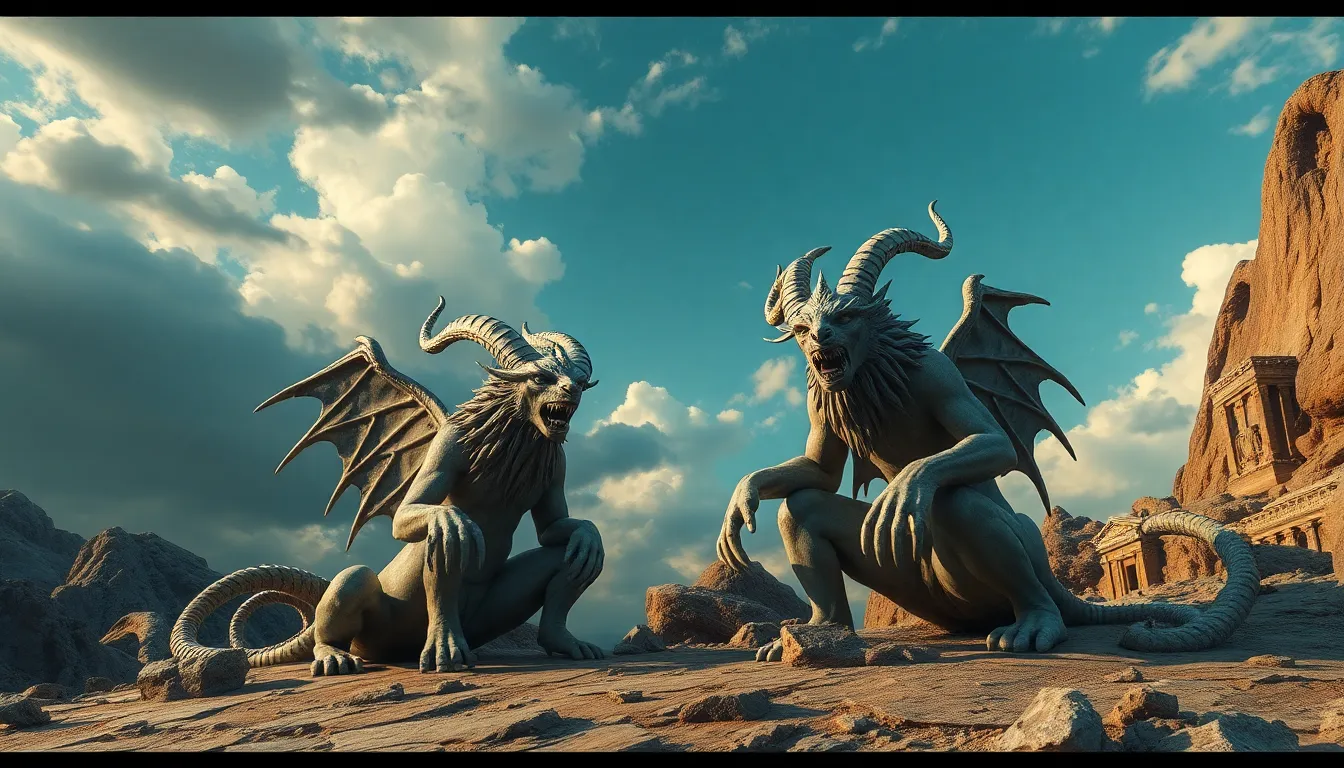Gorgons and Their Representation in Digital Media
I. Introduction
The Gorgons, fearsome creatures from Greek mythology, have captured the imaginations of many cultures throughout history. Defined by their unique characteristics, particularly their hair made of snakes and a gaze that could turn anyone to stone, Gorgons represent both beauty and horror. This duality has allowed them to be depicted in various forms of media, evolving with time while maintaining their mythological roots.
This article aims to explore the representation of Gorgons in digital media, tracing their origins in mythology, examining their portrayals in literature and art, and analyzing how they have been adapted into video games, films, television, animation, and comics.
II. Historical Context of Gorgons
Gorgons originated in ancient Greek mythology, with the most famous being Medusa, Stheno, and Euryale. These creatures were often depicted as monstrous women, embodying the fears and anxieties of society.
A. Origins in Greek mythology
According to myth, Gorgons were daughters of the sea deities Phorcys and Ceto. Medusa, the most well-known Gorgon, was unique as she was mortal, while her sisters were immortal. The tale of Medusa’s transformation into a Gorgon as punishment by Athena adds a layer of tragedy to her character.
B. Key characteristics of Gorgons
- Hair made of venomous snakes
- A gaze that petrifies anyone who looks directly at them
- Scaly skin and sharp fangs
C. Evolution of Gorgon myths over time
Over the centuries, Gorgon myths have evolved, reflecting changing societal values and fears. Initially depicted as monstrous figures, modern interpretations often explore their humanity and tragic backstories, allowing for a more nuanced understanding of these creatures.
III. Gorgons in Literature and Art
Throughout history, Gorgons have been a popular subject in literature and art, influencing how they are portrayed in modern media.
A. Traditional literary portrayals of Gorgons
In ancient texts, such as Ovid’s “Metamorphoses,” Gorgons are depicted as terrifying beings, evoking fear and awe. These portrayals often highlight their monstrous nature and the dangers they present.
B. Artistic representations in ancient and modern art
Gorgons have been represented in various artistic forms, from ancient pottery and sculptures to Renaissance paintings. Artists like Caravaggio and Gustave Moreau have explored the Gorgon myth, emphasizing both their beauty and horror.
C. Influence of literature and art on digital media portrayals
The rich history of Gorgon representations in literature and art has laid the groundwork for their portrayals in digital media. Video games, films, and comics often draw on these traditional depictions while adding contemporary twists.
IV. Gorgons in Video Games
Video games have embraced Gorgon mythology, incorporating these creatures as formidable foes or complex characters.
A. Examples of Gorgon characters in popular video games
- Medusa in “God of War” series
- Gorgons in “Smite”
- Various Gorgon-inspired enemies in “Dark Souls”
B. Analysis of gameplay mechanics involving Gorgons
Games often use Gorgons to create challenging gameplay mechanics. For instance, Medusa’s petrifying gaze requires players to strategize their approach, adding a layer of difficulty and excitement.
C. The impact of Gorgon mythology on game narratives
Gorgon mythology often serves as a backdrop for deeper narratives, exploring themes of transformation, power, and the nature of monstrosity. This adds emotional weight to the gameplay experience.
V. Gorgons in Film and Television
Gorgons have appeared in various films and television shows, often reinterpreted to fit modern narratives.
A. Notable films featuring Gorgon characters
- “Clash of the Titans” (1981 & 2010)
- “Percy Jackson & the Olympians: The Lightning Thief” (2010)
- “The Gorgon” (1964)
B. Television adaptations and their interpretations
Shows like “Xena: Warrior Princess” and “Once Upon a Time” have featured Gorgon-like characters, often blending myth with contemporary themes.
C. The role of special effects in bringing Gorgons to life
Advancements in special effects have allowed filmmakers to create visually stunning representations of Gorgons, enhancing their fearsome qualities and bringing the myth to life in new ways.
VI. Gorgons in Animation and Comics
Animation and comics have offered unique interpretations of Gorgons, often appealing to younger audiences.
A. Representation of Gorgons in animated series and films
Shows like “Hercules: The Animated Series” and films such as “The Little Mermaid II” feature Gorgon-like characters, often presenting them in a more sympathetic light.
B. Analysis of Gorgon characters in comic books
Comic books often portray Gorgons as complex characters, with stories that explore their struggles and motivations, such as in “Wonder Woman” comics.
C. The cultural significance of Gorgons in youth-oriented media
Gorgons in youth-oriented media often serve as metaphors for overcoming fears and embracing one’s identity, resonating with younger audiences.
VII. Modern Interpretations and Feminist Perspectives
In contemporary storytelling, Gorgons have been redefined, offering fresh perspectives on their myths.
A. Redefining Gorgons in contemporary storytelling
Modern narratives often focus on the backstory of Gorgons, portraying them as victims of circumstance rather than mere monsters.
B. Feminist readings of Gorgon myths and their implications
Feminist interpretations highlight the Gorgon as a symbol of female rage and empowerment, challenging traditional notions of femininity.
C. The Gorgon as a symbol of power and resilience
In recent years, Gorgons have emerged as symbols of strength and resilience, representing the struggle against oppression and the reclaiming of one’s narrative.
VIII. Conclusion
The representation of Gorgons in digital media has evolved significantly, reflecting changes in societal values and cultural narratives. From their origins in Greek mythology to their modern portrayals in video games, films, and literature, Gorgons continue to resonate with audiences around the world.
As these mythological figures adapt to contemporary storytelling, their relevance remains strong, offering insights into the human experience. The ongoing exploration of Gorgon mythology in digital media suggests a bright future for these iconic figures, ensuring that their stories will continue to captivate and inspire.




